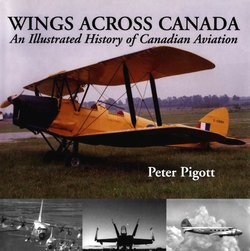Читать книгу Wings Across Canada - Peter Pigott - Страница 17
На сайте Литреса книга снята с продажи.
ОглавлениеCourtesy of the National Archives of Canada PMR 93-296
National Steel Car built 225 Lysanders at Malton. Note the bomb racks.
WESTLAND LYSANDER
The Lysander was a slow, gentle aircraft made for the British Army between the wars and named after the Spartan admiral who destroyed the Athenians in 405 B.C. (the army had a tradition of naming its reconnaissance aircraft after classical heroes). However, it was so slow and temperate that it more resembled Hermia’s befuddled lover in Shakespeare’s A Midsummer Night’s Dream. To the troops in the field, the ungainly-looking aircraft was always the “Flying Carrot.”
Even the Lysander’s origins have a misty, sentimental appeal. Petter was a family-run company that built agricultural and dairy engines in Yeovil, Somerset during the Industrial Revolution. During the Great War, they asked the government how they could help (or cash in on) the war effort. With typical military logic, the Admiralty ordered Petter to build aircraft, and, renamed Westland Aircraft, it found itself in the aviation industry. In 1935, the Air Ministry wanted a two seat army cooperation aircraft to replace the aging Hawker Hector, and Westland’s chief designer Arthur Davenport did a survey of the army squadrons to find out what the officers in the field wanted in an aircraft. The conclusion was that what was needed was a rugged aircraft that had STOL (short takeoff and landing) capabilities on any battlefield. It had to be able to fly very slowly and give the pilot excellent visibility from the cockpit.
Davenport took care of the wings by putting them through the top of the cockpit canopy and bracing them with struts. While this was revolutionary, his genius lay in the wing design. For the low-speed landing, the wing was thickest in the middle and thinnest at the root; the inboard leading edges he designed were the most unusual wings yet. It was also the first British aircraft to have trailing edge flaps and leading edge slats, which made the slow landing speed possible. The aircraft was first designed with retractable landing gear, but this was changed to fixed gear with streamlined fairings that would have landing lights and, if needed, a machine gun. The Air Ministry ordered 169 Lysanders. In 1939, Westland gave National Steel Car (NSC) of Hamilton, Ontario — the Canadian railway rolling stock manufacturers — the order to build them at Malton Airport in Toronto. NSC turned out 225 Lysanders before starting on Lancasters.
